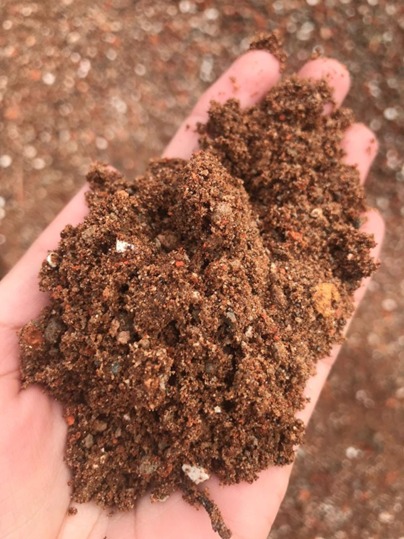A low-cost technology that helps restore degraded areas, sequester carbon, and optimize waste management
Do you know what Technosols are? What are they made of? And how can they contribute to area restoration, carbon sequestration, and waste management?
According to Tiago Osório, a researcher at CCARBON/USP, Technosols represent a recent class of soils. They were incorporated into the FAO classification system (WRB) in 2006. Like any other soil, Technosols must meet specific classification criteria. One such criterion is that they must contain at least 20% anthropic material within the first 100 cm. Another possibility is that they are sealed by materials also originating from human activity, such as pavement or asphalt.
Therefore, Technosols play an important role in several areas, both in the environmental context and in waste management and the restoration of degraded areas.
_______________________________________________________________________
Learn more:
Regenerative Agriculture: The Path to Sustainable Production
_______________________________________________________________________
Mining and construction waste represent serious environmental challenges. The extraction of iron ore and the storage of tailings in dams are warnings of preventable environmental disasters.
In this context, researchers studied Technosols intending to promote grass growth and support the recovery of degraded areas.
Want to know more about how this research was conducted and what results were obtained? Keep reading.
Technosols Can Increase Biomass Production More Than Three Times
The study used proportions of 60:40, 70:30, 80:20, and 100% construction and demolition waste, and iron mining tailings. These Technosols were compared to a natural soil known as Haplic Ferralsol. After 120 days of cultivation, soil and plant samples were analyzed for various attributes, such as dry plant biomass.
The results showed that plants grown in Technosols produced 3.3 times more dry biomass than those grown in natural soil. The highest biomass production in Technosols, particularly the 70:30 ratio, was attributed to the favorable chemical conditions of these soils. Among these conditions, nearly neutral pH, higher cation exchange capacity, and increased nutrient availability stood out.
These results suggest that the use of Technosols, constructed from mining and construction waste, can be an effective alternative for restoring degraded areas and mitigating environmental impacts.
Figure 1. Technosol composed of construction and mining waste, Piracicaba – São Paulo.
_______________________________________________________________________
Find out more:
Soil Health Map of Latin America Reveals Challenges and Solutions for Sustainability
_______________________________________________________________________
Carbon Sequestration and Technosols
Technosols can also function as carbon sinks. This occurs by integrating materials rich in organic carbon that stimulate plant growth, which capture CO₂ from the atmosphere through photosynthesis.
The research results show that Technosols had a significant increase in soil organic matter, reaching 50% in 120 days. In comparison, natural soil showed an 18% increase over the same period. This performance highlights the carbon sequestration potential of Technosols. This occurs due to the combination of crops that contribute carbon and soils rich in iron, which help stabilize it.
These findings emphasize the importance of Technosols as a promising solution for mitigating climate change.
_______________________________________________________________________
Learn more:
Sustainable Management for Methane Emission Reduction in Rice Cultivation
_______________________________________________________________________
Using Technosols as a Sustainable Strategy for Waste Management
Furthermore, the use of Technosols can help solve waste disposal problems. It transforms materials that would be hazardous into something useful and valuable. The study emphasizes the importance of continuing research to improve the composition of Technosols. It also highlights the need to understand their long-term effects on soil and plants.
This type of innovative solution can be an important strategy for Brazil, considering the significant volume of waste generated by mining and construction activities. In addition, there is the growing risk of environmental disasters related to the storage of mining tailings. The adoption of Technosols can therefore play a crucial role in mitigating environmental risks and promoting sustainable practices in the country.






